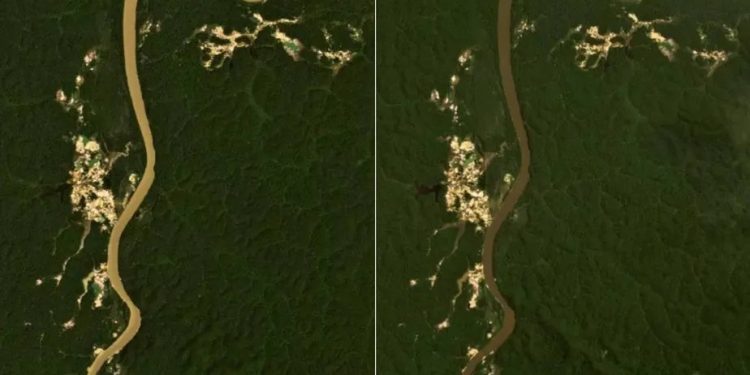BRAZIL – Aerial images released by the Brazilian Army show changes in the color of the waters of the Uraricoera River, in a stretch located in the Yanomami Indigenous Land, in the last five months, a period in which actions to combat illegal mining in the area began. This Tuesday, the Armed Forces, Ibama, Funai and the Federal Highway Police held a press conference in which they publicized the advances in the region.
The photos of the Uraricoera River, which suffered from mineral extraction from the Ouromil, Brabinho, Barão and Waikas mines, were taken in January and June of this year:

— When we have mining operations, we observe the turbidity of the water, and a recent photo shows how it is today. Of course, the mercury issue will take a little longer. But we see a difference in a period of five months – said Brigadier André Gustavo Fernandes Peçanha, during the press conference, when presenting the photos.
According to Ibama, in the second half of the year, the agency will initiate actions to diagnose the levels of mercury contamination in the region’s waters. Environmental recovery work has already begun, but should be intensified in the coming months, when weather conditions improve:
— It’s raining a lot, which makes flights in the Indigenous Land difficult. We are also prioritizing actions to combat this residual number of prospectors who insist on staying in the Indigenous Land,” said the Ibama representative at the press conference, Diego Bueno.
Lula’s visit to Yanomami indigenous lands
— It is known that craters, the way they did there, 20 or 30 meters deep and 3 hectares in size on the banks of the rivers, are difficult to recover. But nature, if we let it act, with time it recovers – completed Bueno.
The Armed Forces and the Federal Government calculate that the fight against illegal mining caused a loss of BRL 30.9 million. Ferries, aircraft and vessels were destroyed by the authorities, and firearms, ammunition and mercury were seized.
Actions to combat mining began at the beginning of the year, on January 30th. Since then, authorities estimate that 19 mines have been destroyed:
— More than 90% of mining activities are already outside of here. This is noticed with the reduction of clandestine flights that these garimpeiros performed. Now we are going to work to further reduce and to maintain the gains we have had so far, to rid indigenous lands of environmental crimes and cross-border crimes,” said General Ricardo Augusto Ferreira Costa Neves




